Before coming to Nepal, I kept hearing from AP that the embroidery technique used by the Bardiya cooperative was something of a mystery as no one from AP had yet witnessed the designs coming together in real time. I feel that I got a behind the scenes look over the course of a four day training seeing not only the embroidery process, but also the best practices being conveyed from trainer to trainee.
On day one of the embroidery training with BASE, as could be expected, the mood was a little nervous and serious before things really kicked off. Everyone went around the room giving introductions, and then it was up to Kanchan and Kushma to lead the way. They used their own embroidery squares as examples passed around the room so participants understood the end product. And the AP catalogs about the embroidery blocks from Africa also made an appearance as inspiration.
Materials were distributed and trainees were instructed to draw a design for their embroidery square with pencil on a sheet of paper. The hesitation in the room was heavy. References were made to the catalog. Women looked over each other’s shoulder at the other’s paper. Some people started googling ideas on their phone or searching their phone’s photo albums.
Despite the hesitancy, by the end of day one everyone had an initial design ready. Most chose imagery that reflected traditional Tharu culture and lifestyle. The women were then shown how to transfer the design from paper to their cloth using carbon paper.
Kanchan and Kushma created two test designs that the trainees could use to try out the stitches before they went at it with their own hoop. This was a fun step to watch as collaboration between the women grew. One person would try their hand at a stitch while the others formed a circle around them watching their progress before the trial hoop was passed along to the next person in the circle. Stitches were torn out of these two hoops quite ruthlessly when Kushma or Kanchan didn’t think that the stitches were even or close enough to each other to make a good border for the image’s design.
Stitches needed to enter the fabric incredibly close to each other to give a “colored within the lines” look at the end. And the punch needle couldn’t be brought too far away from the cloth or else the excess thread would bunch and the stitch would no longer be flat and even – kind of like how when you forget to put the foot down on a sewing machine the thread isn’t taunt and stitches end up loose requiring you to restart.
The stitching illustration process starts with black thread used to outline the major features of the design, before switching to different colors to color in the spaces within the outline. Once everyone got a hang of how the stitching would go, some people took a look at their initial design they drew on day one and said nope, not gonna happen. A few designs were reworked to accommodate a novice stitcher’s aptitude.
The next part of the training that really got people working together was the process of splitting the threads. Embroidery floss is sold as six thin threads twisted together into one string. For the purposes of punch needle embroidery, we needed that floss divided into three strings of two threads each.
The fastest way to split the threads was to work in teams of four. Three people would wrap their two threads around a makeshift paper spool while the fourth would hold the end of the embroidery floss taunt to avoid all the twisting and untwisting threads from getting knotted. Watching Kanchan and Kushma, there was a technique to the fourth person’s job who could expedite the whole process by constantly running the floss through their hands while they kept the floss tight to loosen the twirl the six threads were in. Since this process worked better in teams, trainees had to ask for help and take turns collecting their needed colors from each other.
Once everyone had the threads they needed, people started to hunker down. The process was more familiar so less troubleshooting emergencies arose. The mood became more relaxed and everyone could enjoy one another’s company. Certain women particularly keen on the process would stay a little longer after the end of the day’s session or bring their hoop home to make more progress during the evening.
We had to shake ourselves out of this calm mood on day four when we realized it was our final day together. Interviews were conducted, and even more photos were taken. In every follow-up interview, all the participants had nothing but great feedback for the trainers! Kudos to Kanchan and Kushma for leading their very first training session!
Posted By Therese McCarry
Posted Jun 28th, 2022

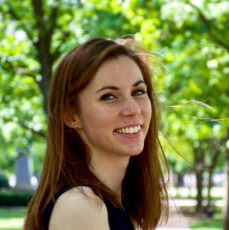
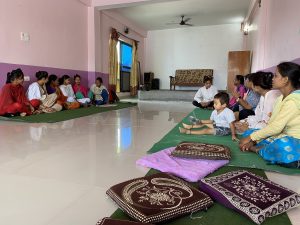
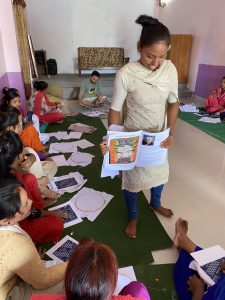
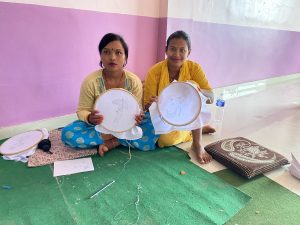
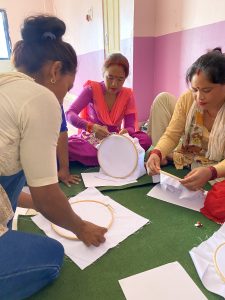
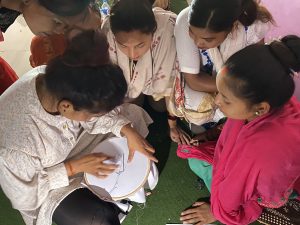
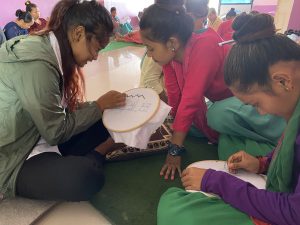
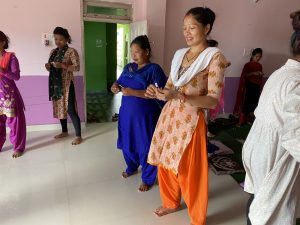
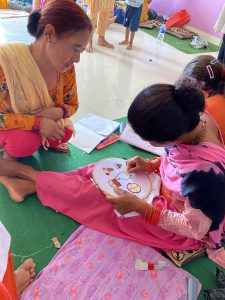
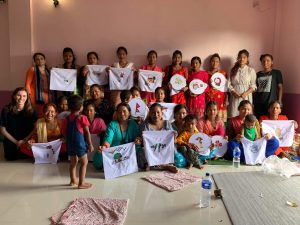
1 Comment
Iain Guest
July 10, 2022
This is absolutely wonderful, Therese! As you know, we’ve supported a lot of embroidery training but I can’t remember a better and more detailed description. I don’t personally know one stitch from another, but I do know that our quilting friends will really appreciate this. We now need to put our minds to what happens next and what we can do to help these women build on the training and improve the quality of their lives. You set us on a good course!